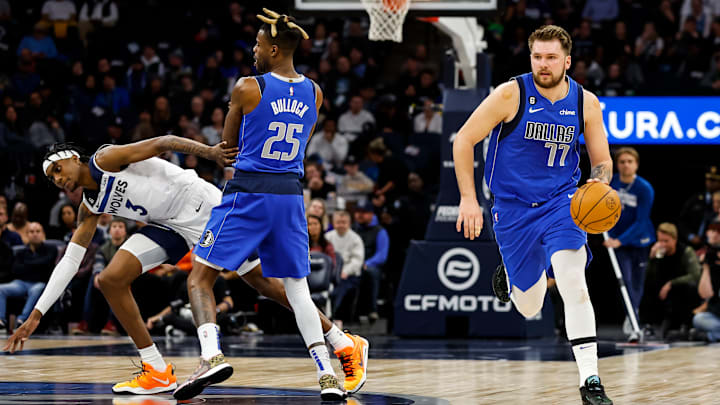At the end of game 2 of the Western Conference Finals between the Dallas Mavericks and Minnesota Timberwolves, Luka Doncic’s eyes widened at the sight of a switch from the Wolves defense off a pick-and-roll play on their final possession. With a slow Rudy Gobert in front of him, Doncic reached into his bag for a classic step-back that sealed the game and had everyone wondering: “Why did they switch off the pick-and-roll, and why with Gobert of all people?”
Doncic is a floor general, and the pick-and-roll is a frequent bread-and-butter play to get himself free or find cutting teammates with lob passes or corner 3-pointers. In former NBA sharpshooter JJ Redick’s podcast with Lebron James, Redick quizzed Lebron on which of the three main defensive pick-and-roll strategies — switching, drop coverage, or the “blitz” double team — is the best option statistically.
The most well-known option is to switch, which wouldn’t be a problem for the Celtics if the Mavericks aren’t screening with their center because of their defensive versatility at every other position. Switching, however, is the least effective option statistically, according to Redick, who shared that switching defenses converts to 1.15 points per chance for Dallas, meaning over 100 possessions this strategy will lead to 115 points. This is the coverage that allowed Doncic to nail his game-winner over Gobert, so imagining Al Horford or a limping Kristaps Porzingis in that scenario is a nightmare for Celtics fans.
Drop coverage defense is a strategy where the defender of the screening player drops back instead of switching while the screened defender recovers from the screen. The defender guarding the screener must stay between the ball and basket and prevent the screener from rolling behind him, but if he’s not near perfect, especially against Doncic, this can lead to alley-oops and easy drive-and-kick opportunities. In the regular season, Redick said drop coverage defense leads to a 1.1 points-per-chance rate, slightly better than switching. It’s the best option against a guard who isn’t as sharp of a decision-maker, so it’s a risky move against Doncic.
And coming in at just .95 points-per-chance, according to Redick, is the blitz strategy. Blitzing is when both defenders read the screen and charge the ball handler, forcing him to make a quick pass out of the double team. More often than not, this quick pass goes to the rolling big man, who has enough time to make a smart decision and get to the hoop for an easy score or pass. It makes sense that this strategy yields the best numbers, because it forces the ball out of Doncic’s hands, whereas in a pick and roll or drop coverage he’s still the primary decision maker throughout the play. Throughout the course of a game, however, blitzing becomes risky because coaches can pick up on the gaps the defense leaves and find ways to exploit the double team. Regardless, it will always require another player to step up.
What is the Boston Celtics' best bet defensively against the pick-and-roll?
The Celtics match up better defensively than any team the Mavericks have played in this year’s playoffs. They can play to their strengths and advantage athletically by using a combination of blitz and switching defenses to limit Doncic in the pick-and-roll.
If the Mavericks screen with Gafford or Lively from the center position, a blitz will force the ball to one of the two awkward big men, who simply cannot dissect an offense as well as Doncic. Quick Celtics defenders can recover and cause the play to crash from the paint. If the screening man is a Mavericks forward or another guard, switching may be the best move, as it keeps a high-level defender on Doncic as much as possible throughout the play, contributing to the wear-and-tear the Celtics will look to impose on Doncic throughout the series.
Using a combination of both strategies will keep Doncic and the Mavericks on their heels, and keep the defense moving fast and effectively. You can't stop Doncic, but you can make him uncomfortable and force the ball out of his hands, and there's no better team up for the task.
